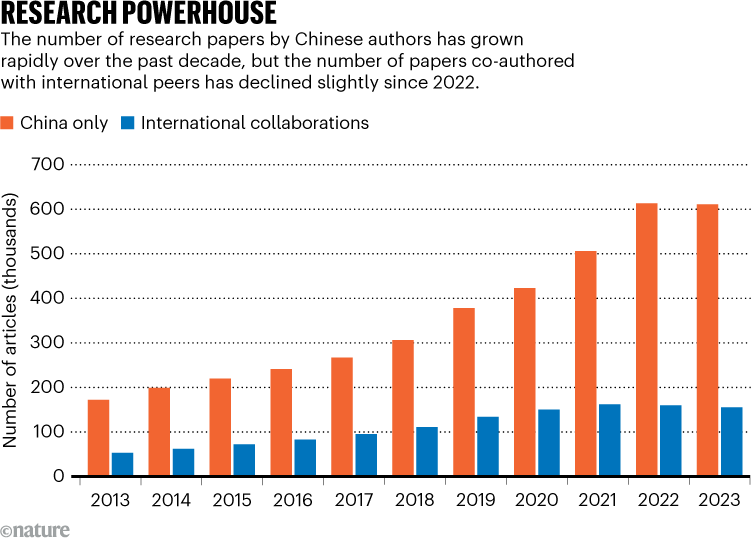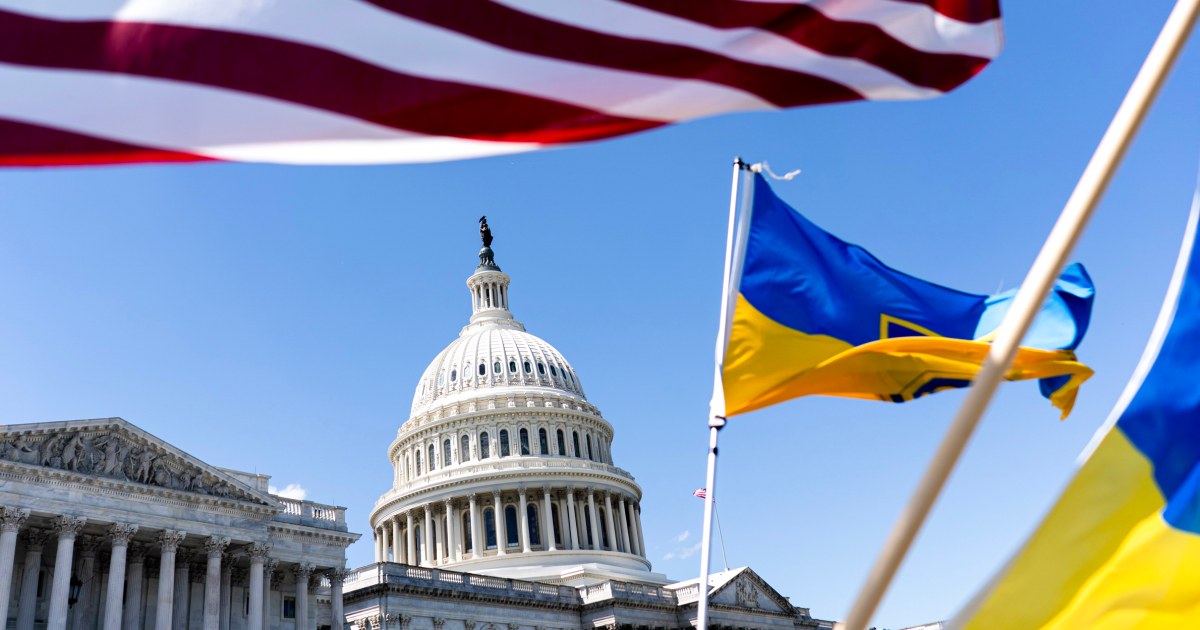China-U.S. Science Collaborations Are Declining, Slowing Key Research
The U.S. and China are collaborating less on projects across scientific disciplines amid a culture of fear in both countries
Manuel Augusto Moreno/Getty Images
China’s scientific collaboration with other countries has declined since the pandemic, driven by falling partnerships with the United States, an analysis shows.
Scientists have been warning that political tensions between China and the United States, combined with the pandemic, have affected research collaborations between the two countries. But it takes time for evidence of this sort of decline to accumulate in research databases.
The latest evidence comes from an analysis conducted by Springer Nature’s team in China. (Nature’s news team is editorially independent of its publisher, Springer Nature.) The authors used InCites, a tool owned by publishing-analytics firm Clarivate, based in London, to analyse internationally co-authored articles that were published between 2013 and 2023. InCites draws on papers indexed in the science-citation database Web of Science.
On supporting science journalism
If you’re enjoying this article, consider supporting our award-winning journalism by subscribing. By purchasing a subscription you are helping to ensure the future of impactful stories about the discoveries and ideas shaping our world today.
They found that in 2022, the total number papers co-authored by researchers from China and their international peers declined for the first time since 2013 (See ‘Research Powerhouse’).

The proportion of research papers with Chinese and international co-authors has been falling for even longer. At its peak, in 2018, 26.6% — roughly 110,000 articles — of China’s output in the InCites database was co-authored with international colleagues. By 2023, the proportion of the country’s articles with international peers had dropped by 7.2%, despite China’s overall number of articles almost doubling to 759,000 over the same period.
The drop in internationally co-authored papers is mainly due to China’s declining share of papers published with US researchers, which fell by 6.4% between its peak in 2017 and 2023 — the largest decline of any country included in the analysis. The findings were presented at the Zhongguancun Forum in Beijing on 25 April.
The decline in US-China collaborations echoes findings from a 2022 analysis conducted for Nature, which found that the number of researchers with dual US and China affiliations on research articles in Elsevier’s Scopus database had fallen by more than 20% between 2019 and 2021.
Although the latest analysis shows that the share of US–China articles has been slowly declining over the past six years, the pandemic exacerbated the downward trend, says Marina Zhang, an innovation researcher who focuses on China at the University of Technology Sydney in Australia.
Political tensions
Zhang says that ongoing geopolitical tensions between the United States and China have also fuelled the decline. “This is especially worrying for researchers,” says Zhang. The US Department of Justice’s controversial China Initiative — which was launched in 2018 to tackle espionage in research and industry — ended in 2022. The crackdown resulted in several scientists being arrested over their ties to collaborators or institutions in China, and has stoked fear among researchers of Chinese descent. Since then, the US government has adopted a range of policies focused on tightening research security. And in July 2023, the Chinese government implemented its revised counter-espionage law, which broadened the definition of what constitutes spying.
The crackdown on perceived foreign interference in both the United States and China is making researchers more cautious about collaborating, says Zhang. Restrictive policies and the climate of fear could end up driving talent away from certain countries and fields, leading to a “brain drain and a loss of valuable human capital”, she says.
This “chilling effect” on US–China collaborations is already hindering influential research, says Tang Li, a researcher who specializes in science and innovation policy at Fudan University in Shanghai, China. For instance, a 2024 study examined the effect that the foreign-interference investigations at the US National Institutes of Health (NIH) had on researchers and found that those in the United States with collaborators in China were less productive during this period than were their colleagues with scientific partners in other countries.
Zhang says that the faltering collaborative ties between the United States and China could also result in the countries pursuing the same types of research separately, instead of joining forces to tackle global problems such as climate change, pandemics and food security.
Turning inwards
More worryingly, the countries might increasingly prioritize domestic interests over international cooperation, which could make scientific research a more nationalistic endeavour, says Zhang.
China’s collaborations with other countries have also tapered off since 2020, but not as markedly as those with the United States. Tang says that reviving US–China collaborations is crucial because such scientific partnerships could help to bridge the gap between the two countries. “Given the increasing global disasters and uncertainties, humanity cannot afford to waste time on nationalistic rivalries,” she says.
This article is reproduced with permission and was first published on July 19, 2024.















